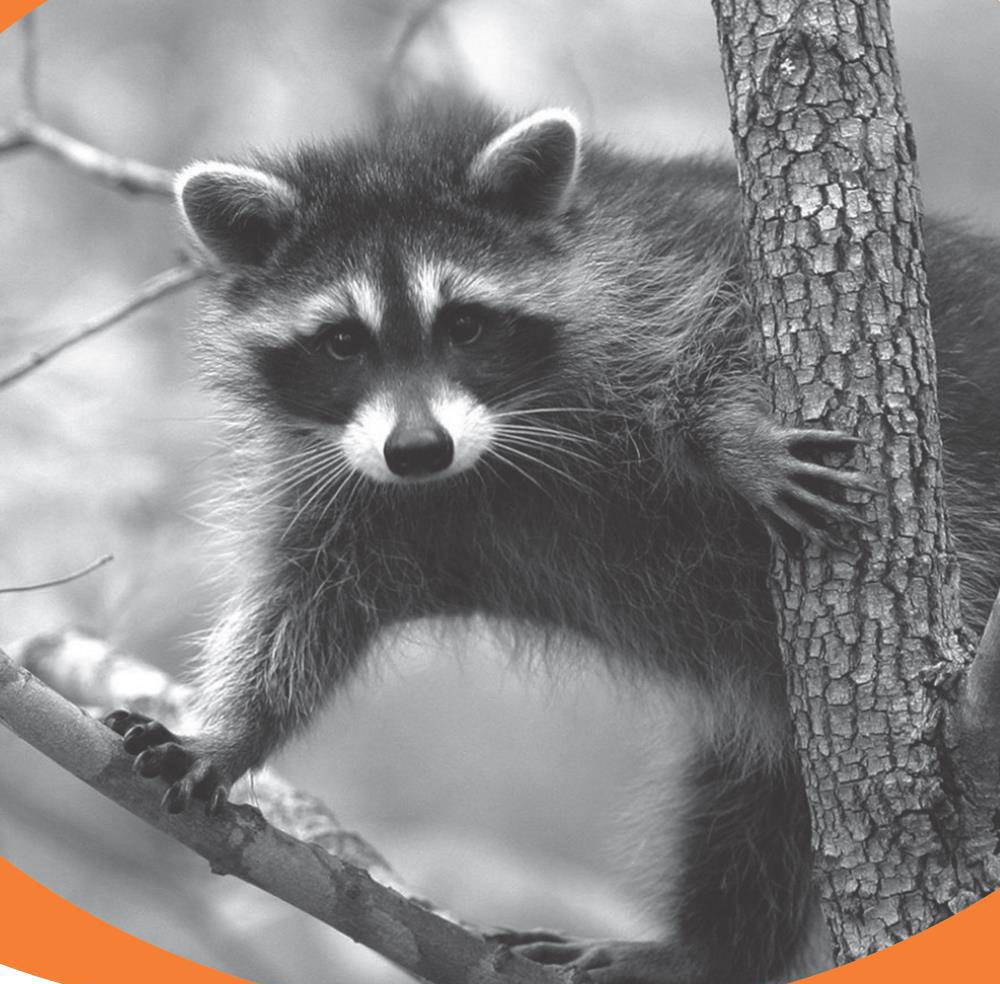果子狸 Masked Palm Civet
2020-05-18


2003年的“非典”,让人痛彻心扉。科学家在“非典”发源她贩卖的果子狸身上检测到了病毒,,所以就有了“非典”病毒来自果子狸的说法,但其实果子狸是“非典”病毒韵中间宿主。那么果子狸有哪些特性呢?为什么它会成为“非典”病毒的中间宿主?
Masked palm civet or gem-faced civet is small-sized 1)mammal that belongs to thecivet family. It can be found across the Indian subcontinent and in the Southeast Asia.Masked palm civet has the widest geographic 2)distribution of all species of civet andability to survive in various types of forests.
Masked palm civet has 3)elongated snout, small round ears with slender tail. Thebody ranges from 50 to 76 cm in length, and the tail is between 45 and 64 cm long, morethan two-third the length of the body. They have no stripes or spots on either the tail orthe body. Weight depends on gender and age, but adults vary between 3.6 and 5 kg.
Masked palm civets are 4)nocturnal solitary predators that can be occasionallyactive during the day. These animals are partly arboreal. They sleep in "beds", whichare usually located in trees and near a water source. Whenalarmed, Masked palm civets can spray a secretio, agaimstthe predator. The spray is similar in function to that of a skunk,to deter other predators.
Masked palm civets are5)omnivores that feedand birds as well as on fruit suchas figs, mangoes, bananas, andleaves. They also eat mollusks,arthropods, bark and to lesserextent snakes and frogs.
Masked palm civet can survive 10 years inthe wild and up to 20 years in the 6)captivity
It is classified by IUCN in 2008 as Least Concern as it occurs in many protectedareas, is tolerant to some degree of habitat modification, and widely distributed withpresumed large populations.
1) mammal ['m?ml]n.哺乳动物
2)distribution [,distri'bju?n]n.分配
3) elongate ['i:l??geit]v.延迟
4)nocturnal [n?k't?:nl] adj.夜间的
5) omnivore ['?mniv?:(r)]n.杂食动物 6)captivity [k?p'tiv?ti]n.束缚
果子狸是属于灵猫科的小型哺乳动物。它遍及印度半岛和东南亚。果子狸在所有种类的灵猫科动物中具有最广泛的地理分布,并且能够在各种类型的森林中生存。
果子貍具有细长的鼻子、小圆耳朵和细长的尾巴。长度在50到76厘米之间,而尾巴长度在50到64厘米之间,占整个身体长度的三分之二还多。它们的尾巴或身体都没有条纹或斑点。果子狸的体重取决于性别和年龄,但成年果子狸的体重在3.6至5千克之间。
果子狸是夜间孤独的捕食者,白天可能偶尔活动。它们部分是树栖动物,通常躺在树上和水源附近的“床”中睡觉。受到惊吓时,果子狸会分泌物喷向捕食者,这些分泌物的功能与臭鼬的相似,可阻止其他捕食者。
果子狸是杂食动物,以老鼠和鸟类以及无花果、芒果、香蕉等水果和树叶为食。他们还吃软体动物、节肢动物、树皮以及较小程度的蛇和青蛙。
果子狸在野外可以生存10年,在圈养中可以生存20年。
由于它在许多保护区出现,在一定程度上可以改交栖息地,并且大量存在且分布广泛它被世界自然保护联盟列为“无危”物种。
